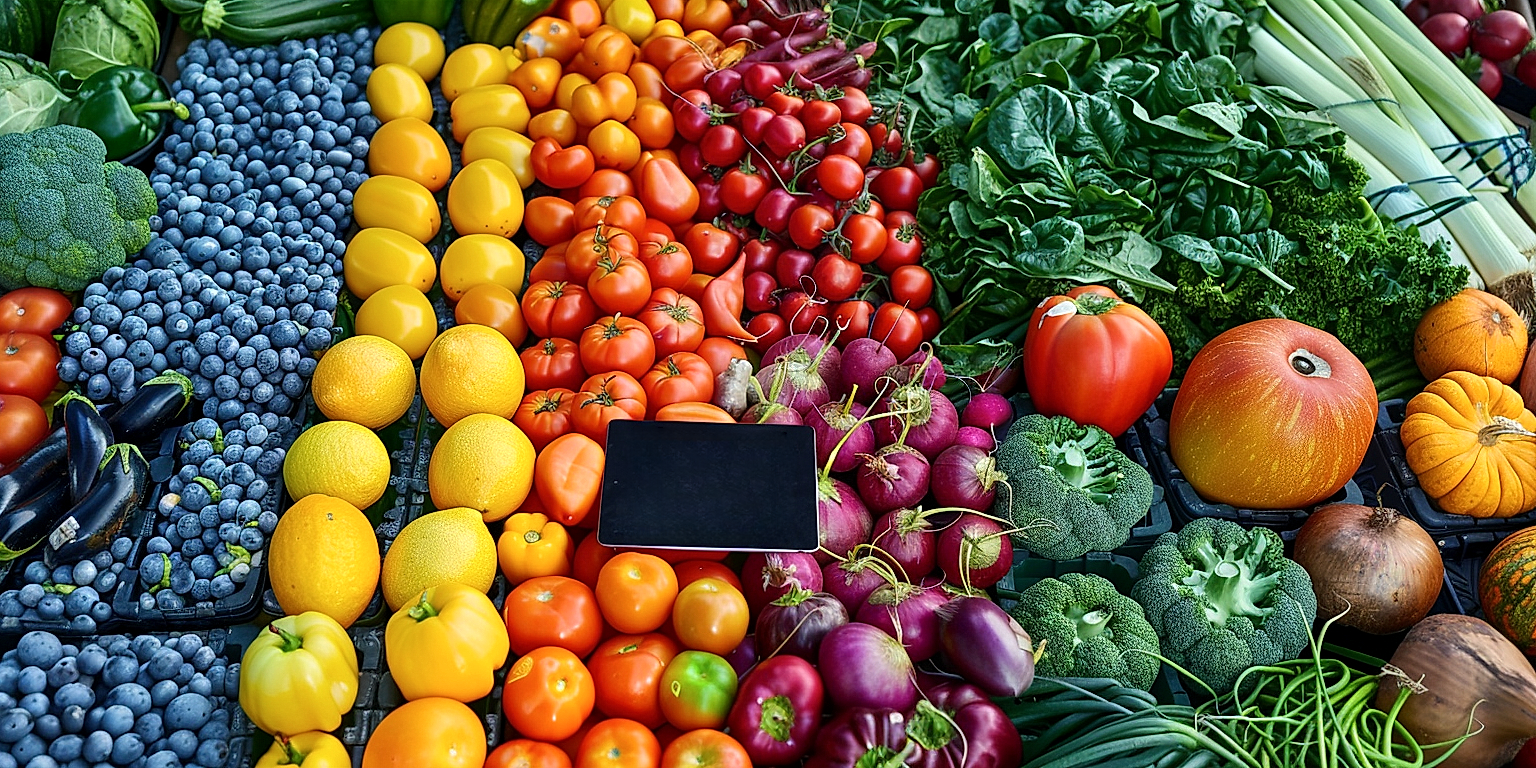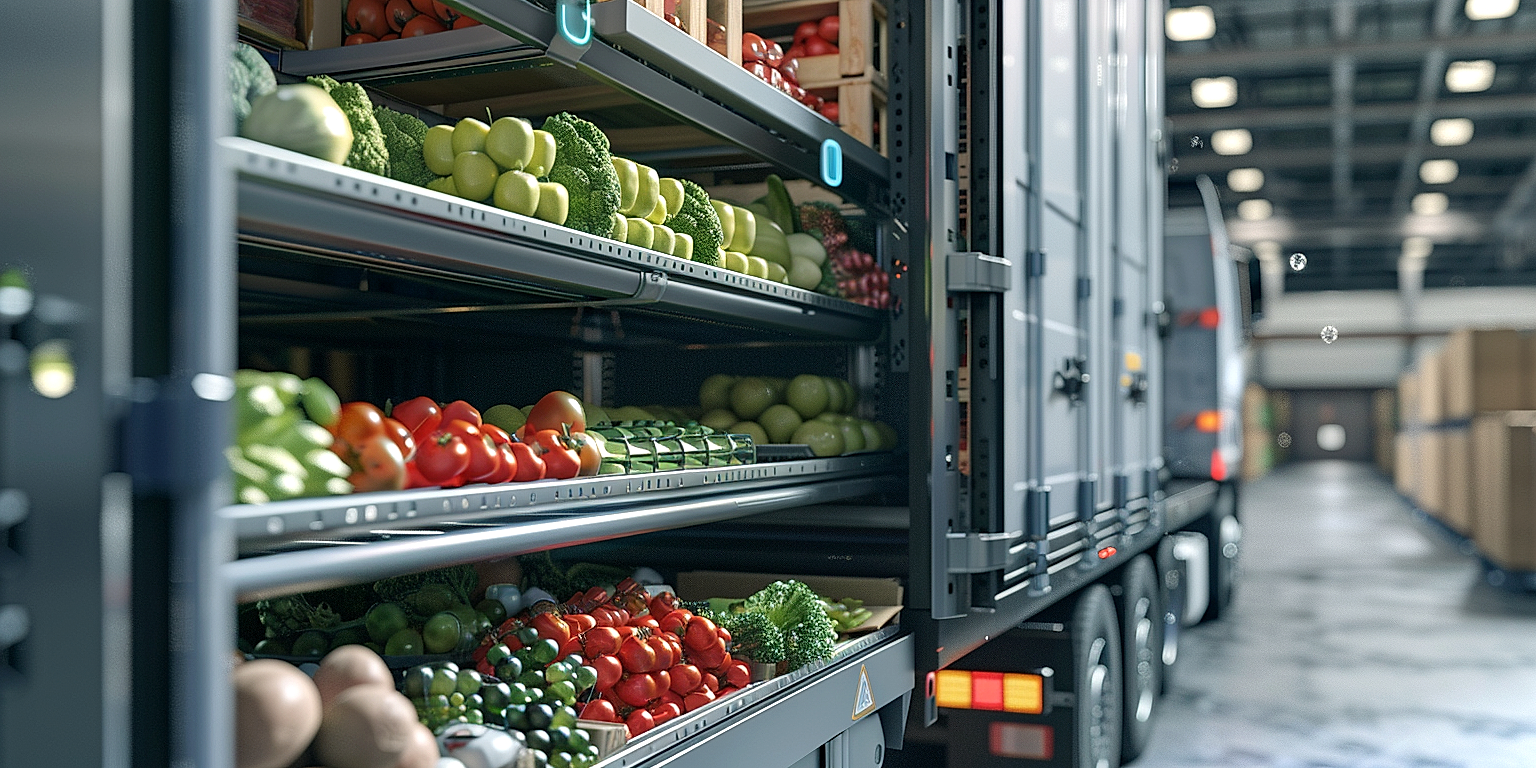The digital revolution has seen immense technological progress across various industry sectors.
A segment that stays at the forefront of this transformation is logistics, particularly in the domain of produce shipping.
However, the implementation of these advancements across the industry spectrum varies widely.
While some companies are quick to adopt these changes, others grapple with the evolution.
This paper outlines six indispensable logistics technologies that could revolutionize the operational efficiency of companies shipping produce.
We aim to provide a comprehensive guide on the applications and advantages of these tools to optimize and streamline logistics processes.
Contents
Logistics Technologies Every Produce Shipper Should Adopt
1. Real-Time GPS Tracking Systems
Incorporating real-time GPS tracking systems has become a necessary strategy for produce shippers worldwide.
This technology offers precise tracking of shipments, ensuring that all parties involved know the exact location of their goods.
The use of real-time GPS tracking systems facilitates coordination and communication, which is crucial for effective logistical operations.
These tracking systems provide granular data, allowing produce shippers to track the movement of goods accurately.
This, in turn, results in improved efficiency in the transportation and delivery process.
Particularly, in the case of perishable goods such as produce, real-time tracking can literally make the difference between profit and loss.
A significant advantage of installing real-time GPS systems in your produce shipping logistics is that these systems reduce the risks of losses and damages to the shipment while in transit.
These advanced tracking systems help in anticipating potential problems, like unfavorable weather conditions or traffic jam, which could potentially delay the delivery of produce.
With adequate preparation and foresight allowed by these systems, real-time GPS tracking can ensure that produce reaches the consumers in the freshest possible condition.
Moreover, real-time GPS tracking systems enhance the visibility of operations for the entire team involved.
It provides a medium for relevant parties to track their cargo in real-time, fostering a sense of transparency and accountability.
Such transparency can strengthen client relationships and build trust, adding to the overall business reputation.
Furthermore, the implementation of GPS tracking systems also helps businesses make data-driven decisions.
Constant tracking and monitoring provide a plethora of data that can be analyzed for decision-making processes which can improve and optimize operations.
The use of these tracking systems also provides an opportunity for shippers to develop a predictive analysis of the shipping process, helping to streamline the process further.
Hence, the adoption and implementation of real-time GPS tracking systems are vital for contemporary produce shippers who seek to optimize their operations, reduce costs, provide stellar customer service, and stay competitive in the market.
2. Advanced Warehouse Management Software
Efficiency is always a priority in logistics, and advanced warehouse management software introduces a degree of strategic optimization that traditional methods can’t match.
Through data collection, intelligent analysis, and automated action, warehouse management software can significantly improve your operation’s productivity.
The benefits of advanced warehouse management software can be seen in terms of cost-saving, better use of resources, and increased overall productivity.
One way this tool reshapes warehouse operations is through reducing errors in shipping, receiving, and put-away processes, ensuring the right products get to the right places at the right time.
This is accomplished via features such as barcoding, RFID tagging, and real-time data collection, which work synergistically to minimize human error.
Another advantage of using advanced warehouse management software is its ability to improve inventory accuracy.
It can create a digital replica of your physical warehouse, enabling better visualization and control of stock levels, storage usage, and product movement, thereby avoiding waste and optimizing storage.
Shipping and delivery schedules are also upgraded with warehouse management software since it can intelligently assign resources, schedule tasks, and create optimized routes for picking items, leading to faster order fulfilment and improved customer satisfaction.
Moreover, these software tools not only enhance warehouse operations but also promote better labor management.
By providing real-time visibility into worker productivity and task completion, managers can better allocate staff, reduce unnecessary overtime, and identify areas for performance improvement.
Advanced warehouse management software is not a one-size-fits-all solution, but an adaptable tool that can be customized to meet your specific logistics needs.
It can integrate seamlessly with other business management systems like ERP or CRM, resulting in increased efficiency at all levels of your operation.
These tools also come with responsive and adaptive UIs that reduce the learning curve, making it easy for all members of the team to adapt swiftly to the new management system.
Ultimately, the power of advanced warehouse management software lies in its ability to transform traditional logistics methods into intelligent, data-driven systems that deliver real, measurable improvements to your operation.
This makes it an essential technology for any produce shipper aiming to stay competitive in an ever-evolving industry.
Although implementing this technology requires some investment, the potential for increased productivity, error reduction, and overall cost saving significantly outweighs the initial cost, making advanced warehouse management software a wise investment for any forward-thinking produce shipper.
3. Automated Loading and Unloading Tech
In the logistics industry, the labor-intensive process of loading and unloading goods can often be a bottleneck, causing delays and inefficiencies in the supply chain.
The adoption of Automated Loading and Unloading technology (ALU) provides a valuable solution, enhancing efficiency, and productivity in the shipping process.
Logistics technologies like ALU can handle a wider variety of goods, reduce the physical strain on workers, and operate more precisely and consistently compared to manual handling.
Many shippers are increasingly investing in ALU technology due to its potential to increase throughput, improve workplace safety, and reduce operational costs.
Automated Loading and Unloading technology is a game-changer in logistics, enhancing operational efficiency, reducing manpower requirement, and improving safety in warehouses.
With automation, vehicles can be loaded and unloaded in minutes, reducing the dwell time at shipping and receiving docks.
Improved speed and efficiency directly translate into faster turnaround times, leading to increased supply chain velocity and ultimately, customer satisfaction.
Another benefit of ALU tech is its round-the-clock operating capacity, unfazed by breaks or shift changes which typically disrupt manual operations.
Automation also reduces human errors, leading to fewer damaged products and increased accuracy in order fulfillment.
Moreover, by eliminating repetitive and physically demanding tasks, automation helps create safer work environments and reduce injury rates.
Highly adaptable, ALU technology can be integrated with other logistics technologies such as Warehouse Management Systems, Real-Time GPS Tracking Systems, IoT devices, and Blockchain-driven food traceability solutions to deliver holistic supply chain optimization.
However, ALU adoption can be a significant investment, requiring careful consideration of warehouse design, goods characteristics, business scalability, and possible return on investment.
While there might be some initial financial output, the long-term benefits in terms of efficiency, labor reduction, and safety improvements make it a smart investment for those involved in the produce shipping process.
Considering its many benefits, Automated Loading and Unloading technology is shaping the future of logistics and is a key technology that every produce shipper should consider adopting.
Constant advancements in ALU technology ensure that this investment will continue to deliver value well into the future as part of an overall digital transformation strategy in logistics.
4. Internet of Things (IoT) Devices
The adoption of Internet of Things (IoT) devices in the field of logistics, particularly in the shipping of produce, has brought about considerable efficiency and effectiveness gains.
As its name suggests, the IoT links virtually any device with an on and off switch to the internet, including cellphone, coffee makers, washing machines, headphones, lamps, wearable devices, and even ship carriers.
This expanded interconnectivity offers numerous benefits and opportunities unique to the logistics industry.
An IoT-based system enables real-time visibility into the supply chain, providing shippers with critical data about the location and condition of their goods at any given time.
IoT-enabled devices are revolutionizing logistics by providing full transparency, thus enabling timely decisions to address any issues that could affect the quality, freshness, and timely delivery of produce.
For instance, an IoT-equipped truck can provide information about its temperature, humidity level, shock, and vibration, which are especially crucial for transporting perishable goods.
Should any of these conditions go out of the specified range, managers can take immediate corrective action to prevent damage or spoilage of goods.
Moreover, IoT devices can also help improve route optimization. GPS enabled IoT devices can ensure that transporters take the most efficient routes, avoiding traffic and ensuring timely delivery.
Pairing IoT technology with the predictive analysis, logistics operators can also forecast potential issues, mitigate risks, and devise preventive strategies.
The criterion of IoT primarily hinges on data collection, and the many devices in play have sensors to collect, transmit, and analyze data online in real-time.
With IoT, shippers have the ability to track the entire journey of a product – from the producer to the end consumer, enhancing their logistical efficiency.
Additionally, IoT devices can significantly reduce the risk of theft and pilferage as they offer real-time tracking and monitoring.
Incorporating IoT into logistics may seem like a significant undertaking and possibly costly endeavor, but the benefits of enhanced visibility, increased efficiency, improved customer satisfaction, risk reduction, and cost savings make it well worth the investment.
Coupling IoT with other innovative technologies like artificial intelligence and machine learning, shippers can anticipate problems, optimize routes, save costs, and ultimately offer better service to their customers.
Indeed, in a world increasingly oriented towards digital dominion, IoT is becoming an indispensable tool for logistics management, especially in the fast-paced industry of shipping produce.
5. Blockchain-driven Food Traceability Solutions
As modern shoppers become increasingly health-conscious and concerned about their environmental impact, food traceability has taken on an improved significance.
Blockchain-driven food traceability solutions are a game-changer in the agricultural supply chain, improving accountability and transparency for consumers.
These solutions not only allow end consumers to trace their food from farm to fork, but also facilitate producers and distributors in monitoring the supply chain in real time.
Blockchain technology creates an immutable history of transactions, making each step in the food supply chain easily verifiable.
Thus, Blockchain-driven technology in the food chain significantly enhances the effectiveness of food safety measures and improves trust between consumers, producers, and transporters.
Integrating blockchain technology with logistics also ensures end-to-end visibility, drastically reducing chances of fraud, and enhancing the efficiency of recalls when necessary.
More interestingly, blockchain solutions in food traceability can deter food fraud by providing indisputable proof of product origin and quality assurance details.
Blockchain solutions can, therefore, help reduce the wastage of food and resources and ensure that the hard work of farmers is acknowledged and fairly remunerated.
Moreover, the adoption of Blockchain-driven food traceability solutions allows for accurate tracing and tracking of produce, no matter where or when it was grown.
This technology can also help keep producers accountable and honest, as the blockchain would show any discrepancies in origination or quality claims.
Even more, transparency brought about by blockchain traceability lets the consumers make informed decisions about their food choices, thereby empowering them.
Importantly, blockchain technology in logistics can lead to improved collaboration and trust among different stakeholders in the supply chain.
Considering the many benefits of blockchain technology in food traceability, it is clear that it should be a priority investment for any future-forward produce shipper.
Adoption of Blockchain-driven food traceability solutions are not just a trend, but a crucial step in the evolution of the food supply chain, set to transform the logistics industry as we know it.
Undoubtedly, the power of blockchain technology lies in its potential to resolve longstanding issues in the food supply chain, including authenticity, transparency, and food safety.
The Bottom Line
Investments in innovative technologies are paving the way for dramatic improvements in the logistics and supply chain industry.
Real-Time GPS Tracking systems, Advanced Warehouse Management Software, and Automated Loading and Unloading Tech are transforming operations, ensuring efficiency, and reducing costs.
Concurrently, the usage of Internet of Things gadgets is improving data accuracy, product integrity, and delivery speed.
Blockchain-driven food traceability solutions have also emerged as a game-changer, enabling transparency, accountability, and improving consumer trust in food safety.
Forward-thinking companies that leverage these tech advancements are set to gain a substantial competitive edge, ultimately leading to substantial business growth and customer satisfaction.




